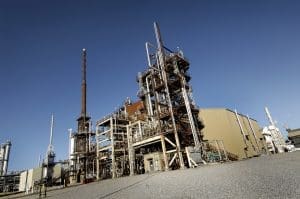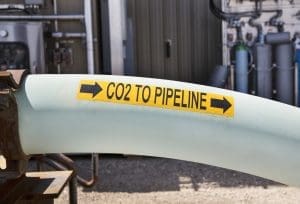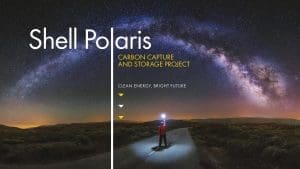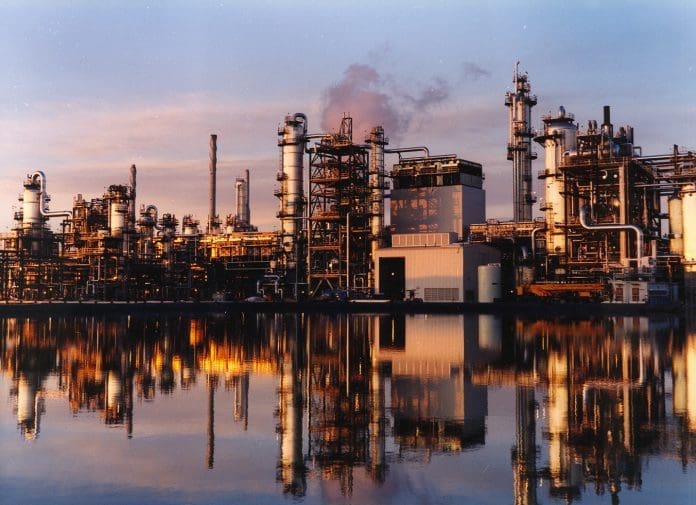Shell is developing a carbon capture and storage (CCS) project that would capture emissions from the Shell Scotford Complex refinery and chemical plant. Called Polaris CCS, the project is expected to have a lifetime capacity of 330 million tons (300 million tonnes) of carbon, with the first phase able to capture and store roughly 826,000 tons (750,000 tonnes) of carbon per year. Shell plans to expand Polaris into one of just five global energy and chemical parks. In its third-quarter 2020 results, Shell discussed its intent to scale down its global chemicals and refining business by integrating conventional fuels and chemicals production with low-carbon fuel production, performance chemicals, and sequestration. The interconnected energy and chemical parks will be able to provide Shell’s customers with lower-carbon fuels, as well as hydrogen.
“It’s fantastic to be talking about something so consistent with the Powering Progress global strategy that Shell has that we can apply right here in Edmonton at Scotford,” said Susannah Pierce, Shell Canada president and country chair. “So how great is it? It’s fantastic. It’s among a series of things you’re going to be hearing from us as we look to be delivering our Powering Progress strategy in net-zero. The great thing about looking at Scotford is that it’s very consistent with Shell designating five chemical and energy parks in its portfolio for investment. This Polaris project is right there, and again it’s a consistent and very exciting implementation of our global strategy right here in Alberta.”
Powering Progress
Powering Progress is the name of Shell’s campaign to transform its business to net-zero emissions. In the process, the company believes it will generate shareholder value and power lives and livelihoods, all while respecting nature. In a February 2021 announcement, Shell estimated that its carbon emissions peaked at 1.87 gigatons (1.7 gigatonnes) per annum in 2018. It then set the goal to reduce its net carbon intensity from a 2016 baseline by 6% to 8% by 2023, 20% by 2030, 45% by 2035, and 100% by 2050.
Shell aims to reduce its upstream oil production portfolio by between 1% and 2% per year. However, it plans to invest in its integrated natural gas division by ramping up its global liquefied natural gas (LNG) capacity to 7 MTPA. It also aims to transition its 13 refineries into the aforementioned five chemical and energy parks, thereby cutting its production of traditional fuels by 55% by 2030.
The Scotford Complex
The Polaris CCS project is expected to be the largest of a series of low-carbon endeavors that are transforming Shell’s downstream operations in Alberta. The Scotford Complex opened 37 years ago and employees roughly 1300 people. By contrast, Phase I of the Polaris project is estimated to create 2000 jobs.
The Scotford Complex is an integrated hydrocarbon processing site that consists of a bitumen upgrader, oil refinery, and a chemicals plant. The facility converts oil sands bitumen into finished and marketable products. The Scotford refinery is the most efficient refinery in all of Canada, using 25% less energy than the average refinery, according to the Solomon Energy Efficiency Index. Shell estimates the amount of energy saved is equal to the electricity needed to power 100,000 households in Alberta. Scotford also has an existing, but much smaller, CCS facility called Quest CCS. Shell has a 10% stake in the Quest CCS facility and a 100% stake in the refinery and chemicals plant.

Over the last six years, Quest CCS has captured an estimated 1.1 million tons (1 million tonnes) of CO2 per year. According to Shell, it’s been able to accomplish this with operating costs 30% lower than originally projected. “Shell is making bold moves to decarbonize our operations, and wider industry, and the Polaris CCS project is the latest example,” said Pierce. “Our plans for Scotford are in line with Shell’s target to become a net-zero emissions energy business by 2050, in step with society. We are creating a world-class site that will provide customers with lower-carbon fuels, products, and CO2 storage. Polaris would also make a significant contribution to Shell’s aim to have access to an additional 27.6 million tons [25 million tonnes] a year of CCS capacity by 2035.”
Polaris CCS Phase I
According to Shell, Phase I of the Polaris CCS project would focus on post-combustion capture from the Scotford refinery’s hydrogen plants (steam methane reformers) and take a CO2 waste stream from the mono-ethylene glycol (MEG) plant. CO2 captured from the MEG plant would be able to produce low-carbon chemicals, known as blue MEGs. These chemicals could then be used to manufacture consumer products around the world.
Shell plans to transport CO2 emissions captured from Polaris through a 7.5-mile (12-km) pipeline to storage wells located near Josephburg, Alberta, where CO2 would be stored more than 6562 ft. (2 km) underground in the Basal Cambrian Sands. For context, Basal Cambrian Sands stretches across the majority of Alberta and is the same formation used to store CO2 from the Quest CCS facility. All told, Phase I of the Polaris CCS project is expected to capture more than 90% of the CO2 emissions related to hydrogen production at the Scotford refinery. Water conservation was a factor in the design of the project, as no additional freshwater is needed to operate the facility.

“From a development cycle perspective, we’ve been at it for a while,” said Pierce. “Our timeline is to get to a final investment decision by 2023 so we can be up and going by the mid-part of the decade. All of these things coming together — getting the floor space [and] presenting the value proposition to Shell investment — is our key focus. Shell, for a very long time, has used carbon price as part of how it models out projects so it will be a combination of carbon price plus a clean fuel standard because a clean fuel standard is really important for the credits generation so we can actually incorporate that into how we look at the overall economies.”
The Road To 25 Million Tonnes Per Year
The Polaris CCS project has the potential to contribute 40% of Shell’s 25 million tonne goal by 2035. Over the short-term, Shell estimates that the 750,000 tonnes per year of CO2 captured and stored by Phase I of the Polaris CCS project would reduce Scotford’s direct (Scope 1) and indirect (Scope 2) emissions by up to 40% from its refinery and up to 30% from its chemical plant.

“I will say this, the Polaris Phase I project is one that has been on the books for a while, and the team has been developing it for a while,” said Pierce. “The way we look at CCS, and hydrogen for that matter, is we start with our existing assets, because we can decarbonize those, we’ve got the experience, and then we branch out to see how we can offer that to customers. So, in this case, Polaris Phase I was really focused on decarbonizing our existing assets. Phase II allows us to offer CCS to others, and then down the road, generate more hydrogen, which is blue hydrogen, for their own use.”
As Pierce said, Phase II is about partnering with other companies to create the potential for Polaris to serve as a massive, industrialized CCS hub. If Shell were to acquire pore space leases from the Province of Alberta, then it estimates that the fully built facility could serve as a storage hub with a capacity greater than 11 million tons (10 million tonnes) of CO2 per year. A pore space lease, also known as a carbon sequestration lease, is the right to drill wells and evaluate, test, and inject CO2 into subsurface reservoirs. Put another way, it’s the permit required for companies to develop CCS projects in Canada. Shell will need to obtain pore space leases if it wants to expand Polaris CCS past Phase I. To scale, Shell would likely need to partner with other industries outside of oil and gas, as well as prove its competency as a trusted operator.
Shell sees the fully fledged Polaris CCS serving as Canada’s first hydrogen hub capable of using captured CO2 to produce blue hydrogen. Shell said it is also interested in tapping into Alberta’s dense network of natural gas assets to develop further blue hydrogen projects. As opposed to green hydrogen, which is produced by splitting water through electrolysis, blue hydrogen is produced by splitting natural gas into hydrogen and CO2.
The End Goal
Shell plans to phase in renewable power generation and biofeedstocks into the Scotford Complex to further grow the breadth of Shell’s up-and-coming Canada-based energy and chemical park. By using CCS and renewable energy as inputs, Shell hopes to produce new feedstocks including bio-oils and waste oils to reduce the emissions of the production process. “Strathcona County is proud to be the home of Shell Scotford, one of Shell’s five global energy and chemicals parks,” said Rod Frank, Strathcona County Mayor. “The announced Polaris CCS project, located within Alberta’s Industrial Heartland, aligns with Strathcona County’s Strategic Plan, delivering economic development and environmental sustainability simultaneously. Polaris CCS will create new jobs, support our local economy, enhance business certainty, investment attractiveness, and aid in recovery from COVID-19. It will also reduce carbon emissions and move our region closer to becoming North America’s hydrogen hub, the fuel of the future.”
“We applaud this announcement by Shell Canada,” said Beth (Hardy) Valiaho, vice president of strategy and stakeholder relations at the International CCS Knowledge Centre. “It builds on their expertise in CCS from both the Quest project and the capture technology at Boundary Dam 3 CCS facility. Through the Polaris CCS project and its potential to be a world-class CO2 storage hub, we see, once again, the leadership of Shell Canada in large-scale CCS as a means to reduce carbon emissions and ensure responsible and sustainable energy.”
Other CCS Efforts
Polaris fits into Shell’s portfolio of CCS efforts, which includes the Northern Lights CCS project in Norward and the Porthos CCS project in the Netherlands. Shell, Equinor, and Total are part of the Northern Lights consortium, a plan to capture CO2 and store it along the Norwegian continental shelf. The Northern Lights project will coordinate with Norway’s Full-Scale (Longship) project, a collaborative effort between power generation and industrial infrastructure companies that will capture CO2 and deliver it to a terminal in Øygarden, Norway for intermediate storage. From Øygarden, the CO2 will be transported via newly designed ships to a permanent storage reservoir 8530 ft. (2600 m) below the seabed of the North Sea. In March 2020, a confirmation well was successfully drilled and completed, validating that the reservoir has the right geological characteristics and capacity (see “Integrated Ingenuity,” Second Quarter 2021 ESG Review, p. 16).
To fulfill the goals set by the Paris Agreement, many European companies feel the need to collaborate through large-scale integrated value chains like the Northern Lights project. Shell, Equinor, and Total initially came together in May 2020, signing a conditional agreement pending funding decisions by the Norwegian government. On December 15, 2020, the Norwegian government approved its decision to help fund the project.
What makes Northern Lights and the Longship project unique is that it’s open to third parties. As the first ever open-source CO2 transport and storage infrastructure network, the project will operate across country borders to help industrial companies store their emissions safely and securely underground. With scale, the project will likely be much cheaper than businesses trying to reduce emissions on their own. The idea is to help Europe as a continent reduce its carbon footprint, with Shell, Equinor, and Total providing the means to do so. Phase one is expected to be completed by mid 2024 with a capacity of 1.65 million tons (1.5 million tonnes) of CO2 per year with plans to increase the capacity up to 5.5 million tons (5 million tonnes) per year based on an increasing customer base. “The Norwegian government’s initiative and support for what will be the world’s first open-source CO2, transport and storage project shows real vision and commitment,” said Shell CEO, Ben van Beurden. “Northern Lights is designed to provide a service to industrial emitters who can now take action on emissions that can’t be avoided. This is key to bringing real progress toward tackling climate change. Shell will play our part in making this a reality.”

















